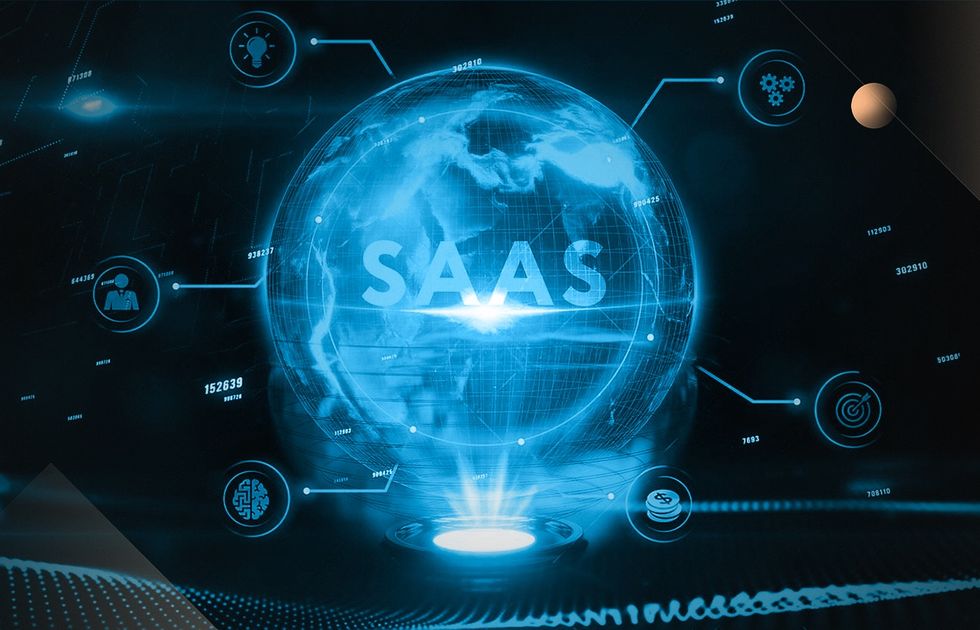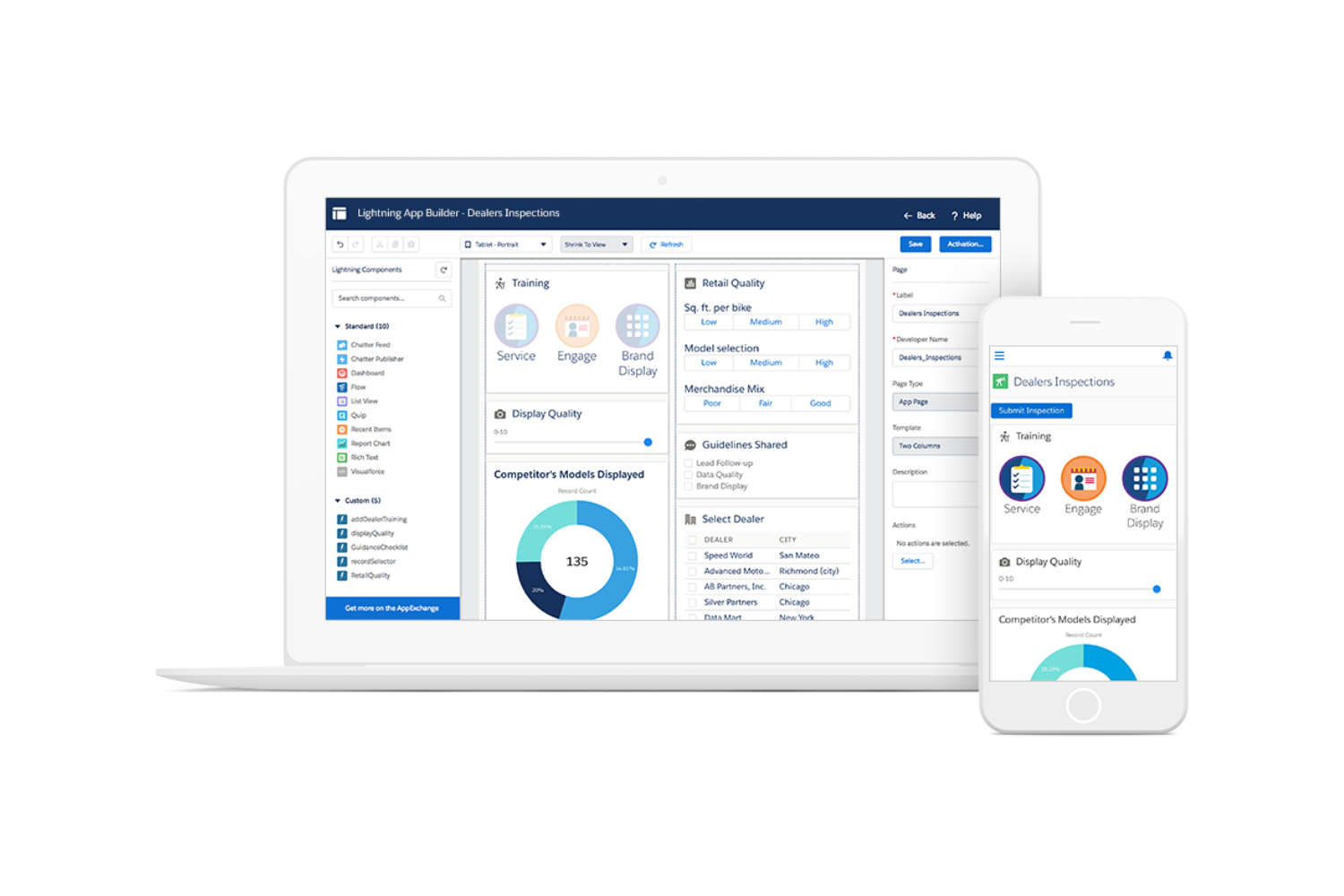Introduction
Software as a Service (SaaS) has revolutionized the way businesses and individuals access and utilize software applications. In today’s fast-paced digital landscape, the traditional approach of purchasing and installing software on individual computers is being replaced by a cloud-based model that offers numerous benefits. SaaS provides a cost-effective and flexible solution that allows users to access software applications via the internet, eliminating the need for complex installations and costly infrastructure.
With the increasing demand for software solutions that can keep up with rapidly changing business requirements, SaaS has gained immense popularity among organizations of all sizes. This model offers a wide range of applications, from project management and customer relationship management to content management and collaboration tools. By offering these applications on a subscription basis, SaaS providers enable businesses to access and utilize software as and when needed, without the hassle of long-term commitments or hefty upfront costs.
SaaS has democratized software usage, making it accessible to organizations that previously may not have had the resources to implement and maintain traditional software systems. This has leveled the playing field, allowing small and medium-sized businesses to compete with larger enterprises on a global scale.
Not only does SaaS offer cost savings and scalability, but it also provides regular updates and maintenance, eliminating the need for users to worry about software updates and bug fixes. The cloud-based nature of SaaS also enables users to access their applications and data from anywhere, using any device with an internet connection, providing flexibility and productivity on the go.
In this article, we will explore the key features and benefits of SaaS, examine some popular SaaS solutions in various industries, discuss potential challenges, and provide guidance on selecting the right SaaS provider for your organization. By understanding the fundamentals of SaaS, you can make informed decisions about incorporating this powerful software delivery model into your business strategy.
Definition of Software as a Service (SaaS)
Software as a Service (SaaS) is a cloud-based software delivery model where software applications are provided to users over the internet on a subscription basis. Unlike traditional software models that require installation on individual machines, SaaS allows users to access and use software applications remotely from any device with an internet connection.
With SaaS, the responsibility of software deployment, maintenance, and support rests with the service provider, freeing users from the burden of infrastructure management. Users simply need a web browser to access the application, eliminating the need for complex installations, updates, and compatibility issues.
The SaaS model follows a multi-tenant architecture, where a single instance of the software application is shared by multiple users or organizations. Each user has their own secure and personalized environment within the shared application, ensuring data isolation and privacy. This shared infrastructure allows service providers to achieve economies of scale and deliver cost-effective solutions to their customers.
Subscribing to a SaaS application typically involves a monthly or annual fee, which covers licensing, updates, maintenance, and customer support. This subscription-based model offers businesses the flexibility to scale up or down based on their changing needs, without incurring hefty upfront costs for software licenses or expensive hardware.
One of the distinguishing features of SaaS is its seamless and automatic updates. Service providers are responsible for applying updates and bug fixes to the software, ensuring that users always have access to the latest features and improvements. This eliminates the need for users to go through the time-consuming process of manually upgrading their software, allowing them to stay focused on their core business activities.
Overall, SaaS offers several advantages over traditional software models, including cost savings, scalability, accessibility, and regular updates. It has transformed the way businesses and individuals consume software, making it a popular choice for organizations of all sizes and industries.
How SaaS Works
SaaS operates on a cloud computing infrastructure, which enables users to access software applications through the internet, without the need for local installations or downloads. The underlying technology stack of SaaS typically includes servers, storage, networking, virtualization, and security measures.
When a user subscribes to a SaaS application, they are provided with login credentials to access the software platform. Upon login, the user is connected to the SaaS provider’s servers, which host the application and store the user’s data securely in the cloud.
The application itself is built to be accessed through a web browser, allowing users to access it from any device with an internet connection. The user interface is designed to be intuitive and user-friendly, with features and functionalities tailored to specific business needs or industry requirements.
Behind the scenes, the SaaS provider manages the storage, infrastructure, and server resources required to keep the application running smoothly. This includes tasks such as data backups, security updates, and hardware maintenance, which are all handled by the provider. As a result, users can focus on utilizing the software without having to worry about the underlying technical aspects.
SaaS applications often offer customization options and user settings that allow individual users or organizations to configure the software to their specific requirements. This flexibility enables businesses to adapt the software to their unique workflows and processes, enhancing productivity and efficiency.
Furthermore, SaaS applications typically facilitate collaboration and data sharing among users. Multiple users can access the same application simultaneously, making it ideal for teams or organizations that need to work together on projects or share data in real-time. Some SaaS solutions also integrate with other software applications or services, providing a seamless workflow and enhancing overall productivity.
Subscription management is an integral part of the SaaS model. Users are typically billed on a recurring basis, either monthly or annually, based on their chosen subscription plan and the number of users or features they require. SaaS providers often offer different pricing tiers to cater to the needs and budgets of various businesses.
In summary, SaaS works by providing users with remote access to software applications through the internet. With the infrastructure and maintenance responsibility handled by the service provider, users can focus on utilizing the software to improve their business operations.
Advantages of SaaS
Software as a Service (SaaS) offers numerous advantages over traditional software models, making it an attractive choice for businesses of all sizes. Here are some key benefits:
1. Cost Savings: SaaS eliminates the need for upfront investments in hardware, software licenses, and IT infrastructure. Instead, businesses pay a predictable subscription fee, often on a monthly or annual basis, which includes all necessary updates, maintenance, and customer support. This cost-effective approach allows organizations to allocate their resources more efficiently and reduces the financial risk associated with purchasing and maintaining on-premises software systems.
2. Scalability and Flexibility: SaaS solutions are designed to scale based on the needs of the business. As companies grow or experience fluctuations in demand, they can easily add or remove user licenses or upgrade to higher-tier plans without disruptions or additional infrastructure investments. This scalability ensures that businesses only pay for the resources and features they require, providing flexibility and cost savings in the long run.
3. Accessibility and Collaboration: With SaaS, users can access their software applications and data from anywhere, using any device with an internet connection. This accessibility fosters remote work and allows teams to collaborate seamlessly, regardless of geographical location. SaaS applications often offer real-time collaboration features, enabling users to work on documents, projects, or databases simultaneously and share updates instantaneously.
4. Regular Updates and Maintenance: SaaS providers take care of all software updates, bug fixes, and maintenance tasks, ensuring that users always have access to the latest features and improvements. This saves organizations time and effort in manually updating their software and frees up IT resources to focus on more strategic initiatives, rather than routine maintenance tasks.
5. Enhanced Security and Data Protection: SaaS providers invest heavily in robust security measures to protect user data. By leveraging advanced encryption techniques, regular security audits, and data backups, SaaS providers can often offer better security than traditional on-premises systems. Additionally, in the event of a data loss or hardware failure, SaaS providers can quickly restore the data from their backups, ensuring minimal disruptions and data loss for the end-users.
6. Rapid Deployment: SaaS applications can be deployed quickly, as they do not require lengthy installations or complex configurations. Users can sign up, log in, and start utilizing the software within a matter of minutes, eliminating the need for extensive setup and training.
In summary, SaaS offers cost savings, scalability, accessibility, regular updates, enhanced security, and rapid deployment. These advantages make SaaS a compelling option for businesses seeking efficient and flexible software solutions.
Examples of Popular SaaS Solutions
Software as a Service (SaaS) has gained immense popularity across various industries, offering a wide range of applications to meet different business needs. Here are some notable examples of popular SaaS solutions:
1. Salesforce: Salesforce is a leading customer relationship management (CRM) software that helps organizations manage their sales, marketing, and customer service activities. It provides a comprehensive suite of tools for contact management, lead generation, opportunity tracking, and customer support. Salesforce is highly customizable and scalable, making it a popular choice among businesses of all sizes.
2. Slack: Slack is a team collaboration tool that facilitates real-time messaging, file sharing, and project management. It allows teams to communicate and collaborate efficiently, streamlining workflows and reducing the reliance on email. Slack offers various integrations with other SaaS applications, enhancing productivity and enabling seamless collaboration between different software tools.
3. Dropbox: Dropbox is a file hosting service that enables users to store, sync, and share files across devices. It provides a user-friendly interface and seamless integration with desktop and mobile platforms. Dropbox offers features such as file versioning, collaboration, and advanced security measures, making it a popular choice for individuals and businesses looking for efficient file storage and sharing solutions.
4. Zendesk: Zendesk is a customer support and ticketing system that allows businesses to manage their customer inquiries and support tickets efficiently. It offers features for ticket tracking, knowledge base management, and multi-channel support, enabling organizations to provide excellent customer service. Zendesk helps businesses streamline their support processes and improve customer satisfaction rates.
5. HubSpot: HubSpot is an all-in-one marketing, sales, and customer service platform. It offers features for content management, lead generation, email marketing, CRM, and customer support. HubSpot’s integrated approach helps businesses attract, engage, and delight customers throughout their journey, driving overall growth and success.
6. Google Workspace: Formerly known as G Suite, Google Workspace provides a suite of productivity tools including Gmail, Google Drive, Google Docs, Sheets, and Slides. It allows teams to collaborate in real-time on documents, spreadsheets, and presentations, increasing productivity and efficiency. Google Workspace also offers seamless integration with other Google services, making it a popular choice for businesses looking for cloud-based productivity solutions.
These are just a few examples of the wide range of SaaS solutions available in the market. From project management tools like Asana and Trello to accounting software like QuickBooks Online and Xero, SaaS offers solutions for almost every aspect of business operations.
By leveraging SaaS applications, businesses can tap into the benefits of cloud-based software while accessing industry-specific functionalities and features, enabling them to streamline processes, improve collaboration, and drive growth.
Potential Challenges of Using SaaS
While Software as a Service (SaaS) offers numerous benefits, it’s important to be aware of the potential challenges that organizations may face when implementing and utilizing SaaS solutions. These challenges include:
1. Dependence on Internet Connectivity: Since SaaS applications are accessed over the internet, organizations are heavily reliant on stable and high-speed internet connectivity. Any disruptions or slow internet connections can impact the accessibility and performance of the software, potentially causing productivity issues for users. It’s crucial for businesses to have reliable internet infrastructure to mitigate this challenge.
2. Data Security Concerns: While SaaS providers invest in robust security measures, data security remains a concern. Storing sensitive business data on remote servers can raise apprehensions about data breaches, unauthorized access, or data loss. Organizations need to carefully evaluate the security measures implemented by SaaS providers and ensure compliance with industry standards and regulations.
3. Limited Customization Options: SaaS applications usually offer a standard set of features and configurations to cater to a wide range of users. However, customization options may be limited compared to on-premises software solutions. Organizations with highly specific or unique requirements may find it challenging to fully customize the SaaS application to fit their needs. It’s crucial to assess the level of customization capabilities offered by the SaaS provider before making a decision.
4. Integration Complexity: While many SaaS solutions offer integrations with other software applications, there can still be challenges in seamlessly integrating different systems. Ensuring smooth data flow and synchronization between SaaS applications and existing on-premises or legacy systems may require additional development efforts or the use of middleware. It’s essential to assess the integration capabilities and compatibility of SaaS solutions with existing systems before implementation.
5. Vendor Lock-In: Adopting a SaaS solution often involves a long-term commitment to a specific vendor. Switching vendors or migrating data to another system can be complicated and time-consuming. Additionally, if the vendor goes out of business or discontinues the product, organizations may face challenges in transitioning to an alternative solution. Performing due diligence and evaluating the vendor’s reliability and long-term viability is essential to mitigate the risks associated with vendor lock-in.
6. Lack of Control Over Updates: While automatic updates are a benefit of the SaaS model, they can also present challenges. Updates may introduce new features or changes that users are not ready or willing to adopt, potentially disrupting workflows or requiring retraining. Organizations need to establish clear communication channels with the SaaS provider and have control over the timing or impact of updates to minimize any potential disruptions.
By being aware of these potential challenges, businesses can proactively address them and ensure successful adoption and utilization of SaaS solutions. Proper planning, evaluation of requirements, and selecting reputable and reliable SaaS providers are crucial steps in mitigating these challenges.
Key Considerations for Choosing SaaS
When selecting a Software as a Service (SaaS) solution for your business, it’s essential to carefully evaluate several factors to ensure you choose the right provider that aligns with your organization’s needs and goals. Here are some key considerations to keep in mind:
1. Functionality and Features: Assess the functionality and features offered by the SaaS solution to determine if it meets your specific requirements. Consider factors such as scalability, customization options, integration capabilities, and any industry-specific functionalities that are critical for your business operations.
2. Data Security and Privacy: Evaluate the security measures implemented by the SaaS provider to protect your data. Look for features such as data encryption, multi-factor authentication, regular security audits, and compliance with industry standards or regulations. Ensure that the provider has transparent privacy policies and data backup and recovery processes in place.
3. Performance and Reliability: Assess the performance and reliability of the SaaS solution, including uptime guarantees, response time, and the provider’s track record in maintaining high service availability. Look for user reviews, testimonials, or case studies to get insights into the SaaS provider’s performance and how they handle any service disruptions or issues.
4. Cost Structure and Value for Money: Understand the pricing structure of the SaaS solution, including any upfront costs, subscription fees, and additional charges for extra features or user licenses. Evaluate the value you will receive for the price paid, considering factors such as scalability, regular updates, customer support, and overall return on investment for your business.
5. Vendor Reputation and Customer Support: Research the reputation and credibility of the SaaS provider in the market. Look for customer reviews, ratings, or testimonials to gauge their customer satisfaction levels and the provider’s ability to address customer needs and provide timely support. Evaluate the availability of customer support channels, response times, and the provider’s commitment to resolving issues efficiently.
6. Data Portability and Exit Strategy: Consider the ease of migrating your data to another system or transitioning to another vendor if needed. Understand the process for exporting your data and ensure that you retain ownership and control over your data even when using the SaaS solution. Clarify any contractual obligations or restrictions that may impact your ability to switch vendors in the future.
7. Scalability and Future Growth: Evaluate the scalability of the SaaS solution to accommodate your organization’s growth and changing needs. Assess if the provider offers different pricing plans, the ability to add or remove user licenses, or upgrade/downgrade features if required. Consider the long-term compatibility and flexibility of the SaaS solution to support your future business expansion.
By considering these key factors, you can make an informed decision when choosing a SaaS provider for your business. Each consideration should be evaluated based on your specific requirements and priorities, ensuring that the chosen SaaS solution aligns with your organization’s goals and contributes to its success.
Key Differences between SaaS and Other Software Models
Software as a Service (SaaS) stands apart from other software models due to its unique characteristics and delivery approach. Here are the key differences between SaaS and other software models:
1. Deployment and Installation: In traditional software models, such as on-premises software, installation and configuration are required on individual machines or servers. This can involve time-consuming setup processes and maintenance activities. In contrast, with SaaS, there is no need for local installations. Users can access the software through a web browser, eliminating installation and setup efforts.
2. Ownership and Infrastructure: With on-premises software, organizations own and are responsible for the hardware, infrastructure, and software licenses. They bear the costs and maintenance efforts associated with these components. In SaaS, the service provider owns and manages the infrastructure and software licenses, relieving users of the ownership and maintenance responsibilities. Users simply subscribe to the service and access the software on demand.
3. Cost Structure: Traditional software models often require substantial upfront costs for software licenses, hardware, and infrastructure. This can pose a significant financial barrier, especially for small and medium-sized businesses. SaaS, on the other hand, follows a subscription-based pricing model. Users pay a recurring fee, typically on a monthly or annual basis, which covers the software usage, updates, maintenance, and support. SaaS offers a more predictable cost structure and eliminates the large upfront investment associated with traditional models.
4. Maintenance and Updates: With on-premises software, organizations are responsible for maintaining and updating the software, which includes applying patches, bug fixes, and new feature releases manually. SaaS providers take care of these tasks in a seamless and automated manner, ensuring that users have access to the latest versions and features without any onerous update procedures.
5. Scalability and Flexibility: Traditional software models may require additional investment in hardware, infrastructure, and licenses as user needs grow. Scaling up can be costly and time-consuming. SaaS, on the other hand, offers scalability and flexibility without the need for significant hardware or infrastructure changes. Users can easily add or remove user licenses or upgrade to higher-tier plans based on their changing needs. SaaS provides a more agile and cost-effective solution for businesses of all sizes.
6. Accessibility and Collaboration: On-premises software may restrict accessibility to specific devices or locations where the software is installed. SaaS, being cloud-based, allows users to access the software and their data from any device with an internet connection. SaaS applications often offer collaboration features, enabling multiple users to work on the same document or project simultaneously, regardless of their geographical location.
7. Time to Deployment: Implementing on-premises software can be a time-consuming process, involving installations, configurations, and potential compatibility issues. SaaS solutions can be deployed quickly, as they are accessed through a web browser, requiring minimal setup. Users can start utilizing the software almost immediately after subscribing, saving time and resources.
These key differences underline the advantages of SaaS over traditional software models, including reduced costs, ease of use, scalability, and accessibility. SaaS has transformed the way software is delivered and consumed, offering a more efficient and cost-effective solution for businesses in today’s dynamic and fast-paced digital landscape.
Future Trends in SaaS
Software as a Service (SaaS) continues to evolve and adapt to the ever-changing needs of businesses and technology advancements. Several key trends are expected to shape the future of SaaS. Here are some notable future trends:
1. Artificial Intelligence (AI) and Machine Learning: AI and machine learning technologies are increasingly being incorporated into SaaS solutions, enabling advanced automation, analytics, and personalized user experiences. SaaS applications are leveraging AI and machine learning to provide intelligent insights, predictive analysis, and automation of repetitive tasks, enhancing efficiency and productivity for users.
2. Integration and Interoperability: With the proliferation of various SaaS applications, the need for seamless integration and interoperability among different software systems becomes critical. Future SaaS solutions are expected to focus more on ease of integration and providing robust APIs to enable smooth data flow and connectivity between different applications, reducing silos and improving overall productivity.
3. Industry-Specific SaaS Solutions: As SaaS continues to mature, there will be an increased focus on developing industry-specific solutions that cater to the unique needs and regulations of specific sectors. The future will likely see the emergence of SaaS platforms and applications that are tailored to industries such as healthcare, finance, manufacturing, and more, delivering specialized functionalities and compliance requirements.
4. Mobile-First and Responsive Design: With the proliferation of mobile devices, future SaaS solutions will prioritize mobile-first design and responsive interfaces. Users expect seamless access to SaaS applications on their smartphones and tablets. SaaS providers will continue to optimize their software for mobile devices, providing a consistent and intuitive user experience across different screen sizes and resolutions.
5. Data Analytics and Business Intelligence: SaaS solutions are increasingly incorporating advanced data analytics and business intelligence features to enable users to gain valuable insights from their data. Future SaaS applications will focus on providing powerful analytics capabilities, data visualization, and predictive modeling to assist businesses in making data-driven decisions and improving overall performance.
6. Enhanced Security and Privacy Measures: As data security concerns continue to grow, the future of SaaS will place even more emphasis on robust security measures. SaaS providers will invest in advanced encryption, authentication, and access control mechanisms to ensure the privacy and protection of user data. Compliance with industry regulations and standards will become a top priority for SaaS providers, building trust and confidence among users.
7. Continuous Improvement and Customer-Centric Innovation: Future SaaS providers will prioritize continuous improvement and customer-centric innovation. They will actively seek customer feedback to identify pain points and areas of improvement, implementing regular updates and new features based on user needs. SaaS vendors will strive to provide a superior user experience and tailor their solutions to the evolving demands of their customers.
These future trends in SaaS highlight the exciting developments and enhancements that can be expected in the coming years. From incorporating AI and machine learning to industry-specific solutions and enhanced security measures, the future of SaaS promises to deliver even more powerful, flexible, and user-focused software solutions for businesses across sectors.
Conclusion
Software as a Service (SaaS) has revolutionized the way businesses access and utilize software applications. With its cost-effectiveness, scalability, and accessibility, SaaS has become a popular choice for organizations of all sizes across various industries. By shifting from traditional software models to cloud-based SaaS solutions, businesses can enjoy numerous benefits such as reduced upfront costs, seamless updates and maintenance, and improved collaboration.
In this article, we explored the definition of SaaS and its key features, including remote accessibility, multi-tenancy, and subscription-based pricing. We delved into the advantages of SaaS, highlighting its cost savings, scalability, accessibility, regular updates, and enhanced security. We also discussed popular SaaS solutions in different industries, potential challenges, and key considerations for selecting the right SaaS provider.
Additionally, we examined the key differences between SaaS and other software models, such as on-premises software, emphasizing the benefits of SaaS in terms of deployment, ownership, maintenance, scalability, and accessibility. We touched upon future trends in SaaS, including AI and machine learning integration, industry-specific solutions, mobile-first design, data analytics, enhanced security measures, and customer-centric innovation.
As SaaS continues to evolve, it is crucial for businesses to stay informed about the latest advancements and developments in the industry. By actively embracing SaaS solutions and responsibly evaluating the available options, organizations can unlock greater efficiency, productivity, and agility in their day-to-day operations. It is important to conduct thorough research, consider specific business needs, and choose a reputable SaaS provider that aligns with the organization’s goals and requirements.
In conclusion, SaaS has transformed the software landscape, offering businesses an innovative, accessible, and cost-effective alternative to traditional software models. With its numerous advantages, SaaS is set to continue driving digital transformation and empowering organizations across various sectors. By embracing the potential of SaaS, businesses can harness its power to enhance productivity, collaboration, and growth in the ever-evolving digital era.

























